One hundred years ago, the Flanders region of Belgium lay in ruins. World War One had left cities like Ypres razed to the ground. Many such towns were in such a state of ruin that Winston Churchill suggested they be left as monuments to the Great War rather than being rebuilt. To many, it seemed inconceivable that these “Wasted Lands of WWI” could ever recover.

A century later, I found little in the way of devastation. Blue-green fields of corn, potatoes, and cabbage stretched to the horizon, broken only by an occasional hillock or pasture where cows grazed nonchalantly. Cyclists in royal blue Lycra tops and shorts flew by, competing in one of the many races held throughout the summer. Pretty villages appeared around every curve and the meandering Ijzer River sparkled under a brilliant sun.
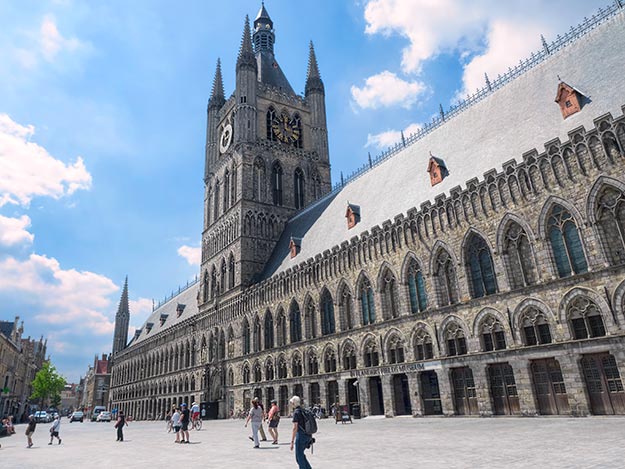
It was on the banks of the Ijzer River that I began to understand the extent of the misery suffered by the residents of Flanders during WWI. When the Germans drew up plans for invading France, they knew that a direct attack would be costly. Instead, they asked Belgian King Albert for permission to pass through Belgium, circle around, and come at French troops from the rear. When the King refused, the Hapsburg dynasty declared war on tiny Belgium as well, insisting that, “If you are not a friend, you are a foe.”
The year was 1914. Belgium was the fifth largest economy in the world, but with no system for military conscription, their army was small and poorly trained. Lacking in military strength, they resorted to cleverness. Much of Flanders consists of land that has been reclaimed from the sea. Still today, a system of canals and sluice gates are used to keep the land dry. Sluices are closed during periods of high tide to keep sea water from flooding in. During low tides, they are opened to allow river water to drain to the sea.
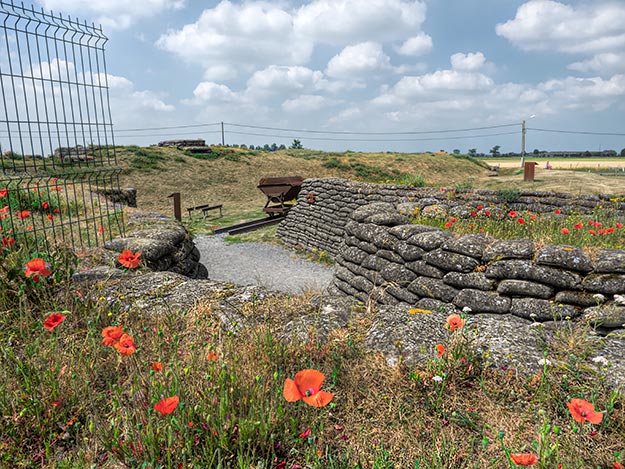
As the Germans began their invasion, the master gate-keeper reversed the process, letting seawater in at high tide and blocking water from draining during low tide. For the next three nights, he and a select group of men manipulated the sluices in secret. After three days, the river overflowed its banks and flooded the lowlands all the way to the coast. The Germans were unable to advance to the sea, where they had hoped to set up a U-boat base.
By that time, the Belgians had begun digging their famous trenches. Life in the trenches was horrific. Initially they were not deep enough for the men to stand upright, so they moved around in a continually stooped state. German forces to the east had commandeered all food and supplies, so Belgian troops had to rely on the British and French for everything from food to bullets. Often, the only available food was the rats that infested the trenches. Perhaps worst of all, the floor of the trenches was constantly flooded. Many soldiers developed Trench Foot, a painful condition that sometimes resulted in pneumonia and even death.
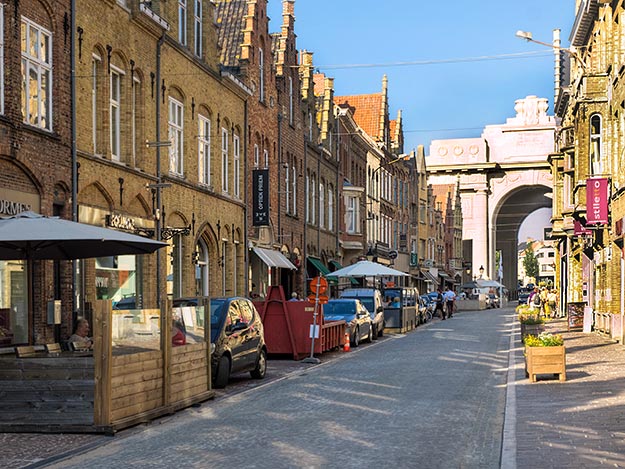
Despite the appalling conditions, Belgians stayed in those trenches for four years, holding off German forces that had expected to overrun the country in three days. When Belgian soldiers emerged from the trenches in 1918, life as they knew it had been unalterably changed.
As the site of numerous WWI battles, no Belgian city suffered more devastation than Ypres. The Germans first rode into the city in September of 1914. Quickly realizing they didn’t have enough soldiers for the task at hand, they took the Lord Mayor captive and left. Shortly thereafter, English and French troops arrived. They held the city until the end of the war, making it a prime target for the next four years.
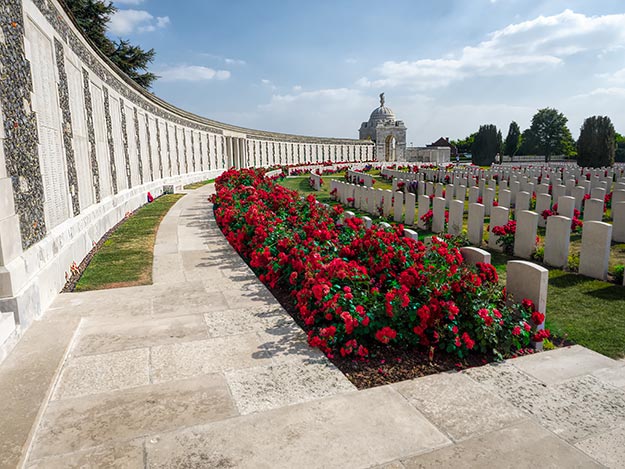
The second Battle of Ypres, which took place between April 22 and May 25, 1915 was a testing ground for chemical weapons. The Germans had used mustard gas once before, against Soviet troops at the eastern front, but the results had been inconclusive. In the interim, they had perfected a new and even deadlier weapon, chlorine gas. On a day when the wind was at their backs the Germans launched their chlorine gas canisters into the battlefield.

The gas gradually rose from the ground and drifted toward French soldiers on the opposite side of the battlefield. Mistaking the gas for fog, the French hunkered down and began firing, assuming the Germans were using it as a screen to attack. It was the worst thing they could have done. The heavier-than-air gas sank into the trenches and attacked every bit of soft tissue on their bodies. Within moments they were screaming in agony, blinded and burning from the inside of their lungs out. When the gas dissipated, the Germans walked through the fields to assess whether the gas had worked. Not a single living thing remained. Even the plants has shriveled and died. The sight was described by Willi Siebert, a German soldier, in his journal:
“Finally, we decided to release the gas. The weatherman was right. It was a beautiful day, the sun was shining. Where there was grass, it was blazing green. We should have been going on a picnic, not doing what we were going to do. …
We sent the [German] infantry back and opened the [gas] valves with the strings. About supper time, the gas started toward the French; everything was stone quiet. We all wondered what was going to happen.
As this great cloud of green grey gas was forming in front of us, we suddenly heard the French yelling. In less than a minute they started with the most rifle and machine gun fire that I had ever heard. Every field artillery gun, every machine gun, every rifle that the French had, must have been firing. I had never heard such a noise.
The hail of bullets going over our heads was unbelievable, but it was not stopping the gas. The wind kept moving the gas towards the French lines. We heard the cows bawling, and the horses screaming. The French kept on shooting.
They couldn’t possibly see what they were shooting at. In about 15 minutes the gun fire started to quit. After a half hour, only occasional shots. Then everything was quiet again. In a while it had cleared and we walked past the empty gas bottles.
What we saw was total death. Nothing was alive.
All of the animals had come out of their holes to die. Dead rabbits, moles, and rats and mice were everywhere. The smell of the gas was still in the air. It hung on the few bushes which were left.
When we got to the French lines the trenches were empty but in a half mile the bodies of French soldiers were everywhere. It was unbelievable. Then we saw there were some English. You could see where men had clawed at their faces, and throats, trying to get breath.
Some had shot themselves. The horses, still in the stables, cows, chickens, everything, all were dead. Everything, even the insects were dead.”
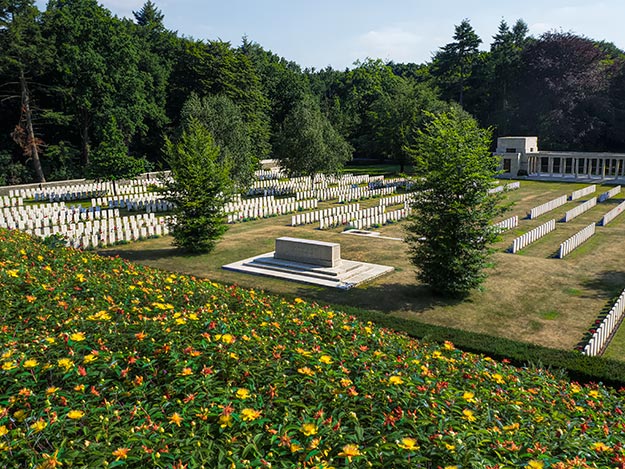
Despite the obviously horrific consequences of chlorine gas, Germans continued to use it throughout the war, killing more than 40,000 soldiers around Ypres alone. Sadly, despite initial condemnation that chemical weapons were immoral, Allies began using them as well.
The third battle of Ypres, officially known as the battle of Passchendaele, was fought from July through November, 1917. Douglas Haig, commander of the British forces, was determined to push back the Germans to widen up the salient around Ypres, in order to gain access to harbors of Bruges and Oostende. He pushed the Germans back only 8 kilometers (about 5 miles) at a cost of more than 300,000 British lives. Generally considered to be the most costly action of the war, it is also criticized as a needless loss of life. Historians make a strong case that Haig used his troops as cannon fodder to keep the Germans occupied until the first American troops could arrive. The sheer lunacy of Passchendaele was revealed when, during one night in April 1918, the Germans took back the entire eight kilometers that the Allies had gained.
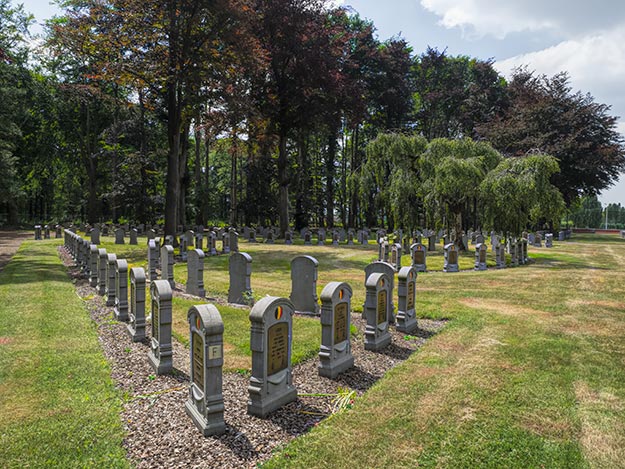
Churchill may have thought it a good idea to leave Ypres as a monument to the horrors of war, but Belgians just wanted to get on with their lives. After the war, they immediately began sorting through the rubble and rebuilding. The enormity of the task must have been incomprehensible. It took two generations for the lands to be usable again after being flooded by salt water. The German’s use of chlorine and mustard gas had killed all the vegetation and animals.
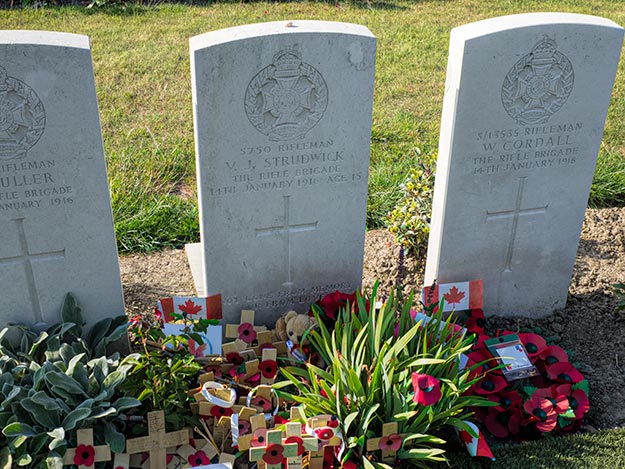
As part of their reparations, Germans were required to truck in thousands of saplings and replant the landscape. Farmers still dig up unexploded grenades, ordinance, and sealed gas canisters when they plow the fields each spring. But today, the only visible evidence of the war are the WW1 sites in Flanders that memorialize the troops who fought so valiantly. With a pledge that they will “never be forgotten,” Belgians built monuments to British, Australian, New Zealand, and American forces on the sites of the major battles they fought. Graveyards for the hundreds of thousands who perished are lovingly maintained and lavishly planted in blooming flowers.
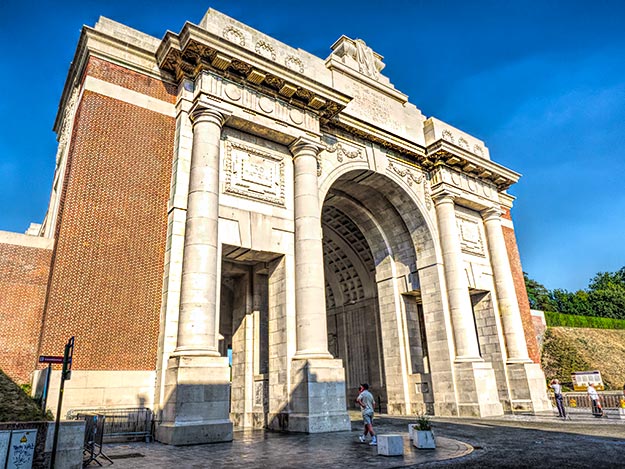
At the end of the day we returned to Ypres for the Last Post Ceremony at Menin Gate. Thousands of soldiers passed beneath this massive arch on their way to the battlefields, knowing they were likely walking to their death. At precisely 7 p.m., buglers marched beneath the arch and played taps. Hundreds of onlookers stood utterly silent as townsfolk and visitors placed wreaths of remembrance in a special nook. The master of ceremonies recited a pledge to the fallen. “We will never forget,” he said solemnly. The crowd relied as one, “We will never forget.”
I was an emotional wreck by the time we climbed into the tour van for the ride back to Brussels. I thought about the hundreds of thousands of lives that were unnecessarily lost, about the suffering and deprivation that this tiny country had endured. And it would not end with WWI. Twenty short years after the “war to end all wars,” the European theater was embroiled in a Second World War and Belgium would again be in the thick of it.

As we drove away, I struggled to reconcile the sight of this lovey town with the horrors it had once experienced. Happy people strolled the streets and sipped coffee in sidewalk cafes and all seemed well with the world. More than anything, Ypres and the entire Flanders region is a testament to the endurance of the human spirit.
Author’s note: I booked and paid for my WWI Tour of Flanders with Brussels City Tours. The tour departs from Brussels city center at 9 a.m., every Thursday and Sunday, returning about 12 hours later. The price is 89 Euros ($104 USD at the time of publishing) for adults or 81 Euros for students and seniors. The tour lasts about 12 hours and does require quite a bit of walking. I have only high praise for our very knowledgeable guide and highly recommend this tour of WW1 sites in Flanders for anyone who is a history buff or student of war.
Check prices for accommodations in Brussels at Booking.com, Hotels.com, or HotelsCombined.com. Read reviews about hotels and guest houses in Brussels, Belgium at TripAdvisor.
Disclosure: This article contains affiliate links to hotel booking sites. If you click on any of the links and make a booking, I may earn a small commission, which keeps this blog free to read.

Thank you for sharing. Beautifully written. Heartfelt.
Thanks so much Alexis. Appreciate your comment. It was a totally heart-rending tour, but one that everyone should take so that we never forget the past.
Barb, you do such an amazing job of everything you do! I only have one question for you: How do you keep going? I love what you do, but it looks exhausting to me!
Hi Laura Lee! Thanks so much for your kind words. You know how much they mean to me. It is a lot of hard work (and extremely exhausting, sometimes) to keep the blog up and running, especially when I’m on the road, moving to a new place every few days. Fortunately, I love it. But after more than 10 years, I feel my stamina decreasing a bit. Not surprising at 65. So, I’ve made a decision to get an apartment again, in Thailand, beginning in December. I’ll still be traveling at least half of the time, but I’ll have a home base, so I don’t need to carry everything with me for all types of weather and activities. Hope things are going well for you. Where did you eventually land?
God … I never knew exactly how horrific WWI was until I read this post. Every war-mongering politician should be made to read this before they are allowed to order another offensive.
Hi Bill: It was definitely a horrid, gruesome war, and one that didn’t need to happen. The events leading up to it were just one screw up after another until all parties were in a place from which they couldn’t retreat. Frankly, I see very similar events happening all over again, right this moment, and it terrifies me.
Extraordinary history!
Hi John: It was indeed, an extraordinary time in history. It was especially poignant to me because this is the 100-year anniversary of the Battle of Passchendaele, which was fought from July through November, 1917.